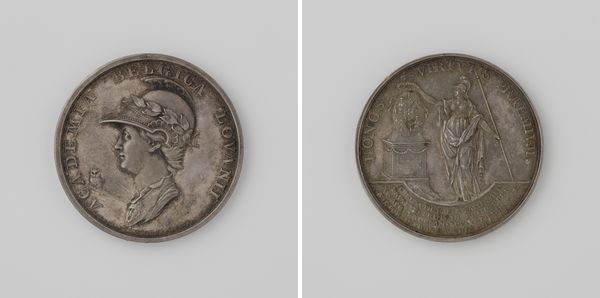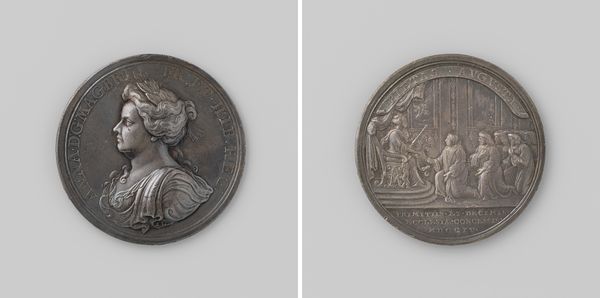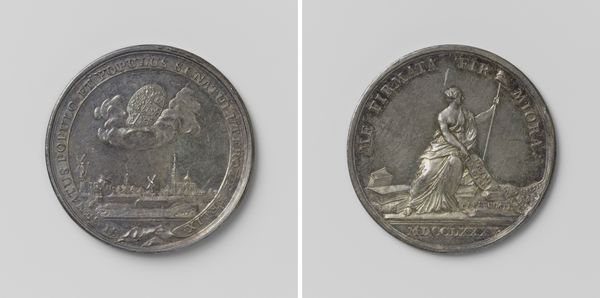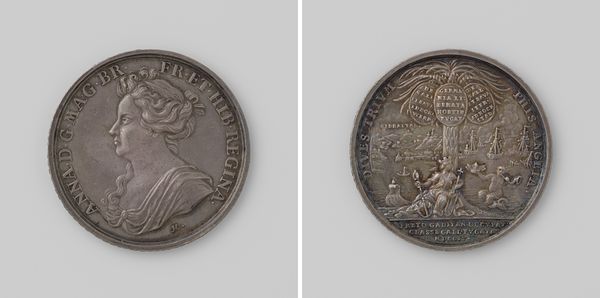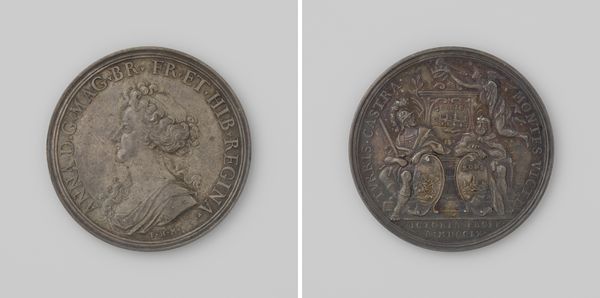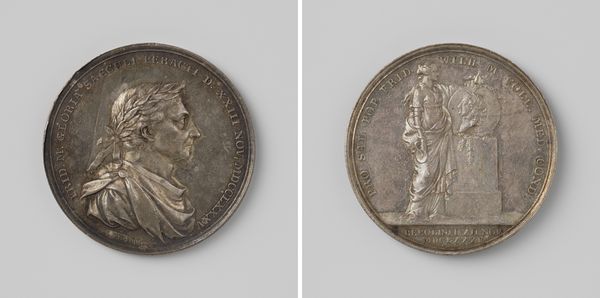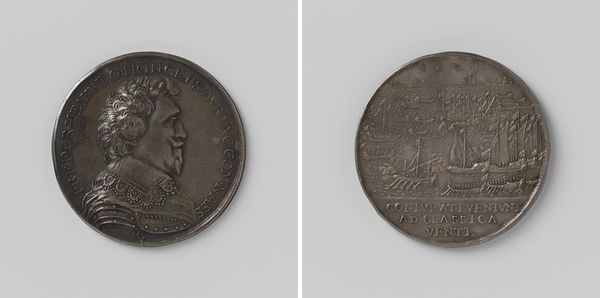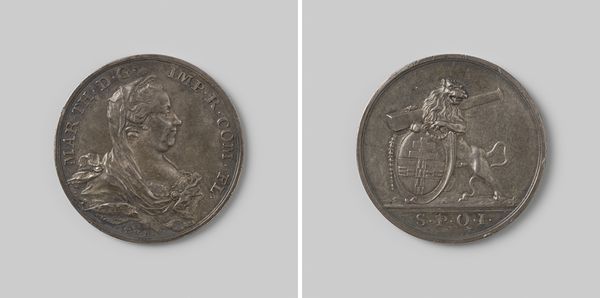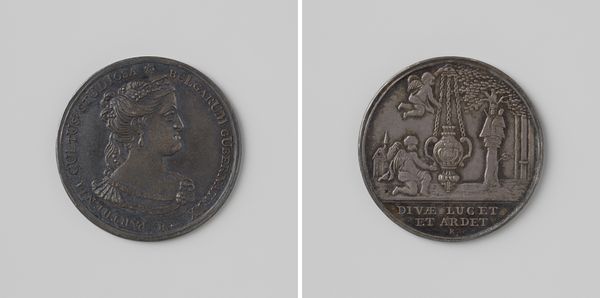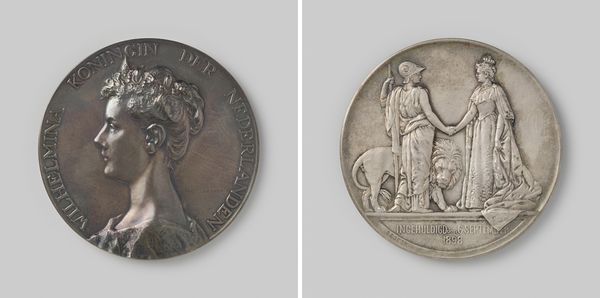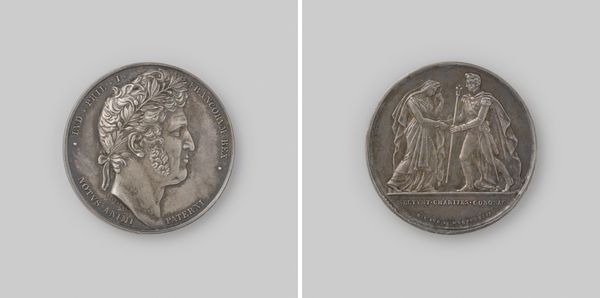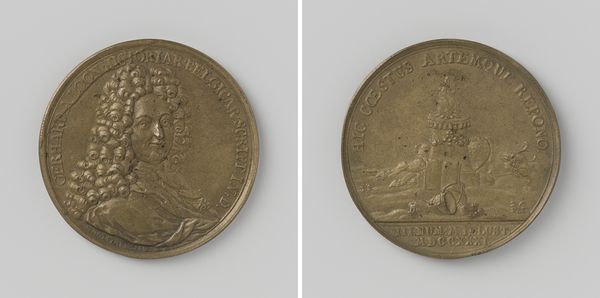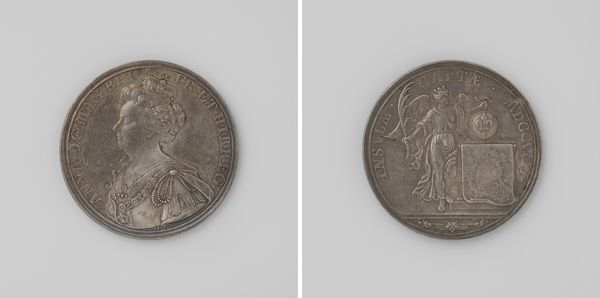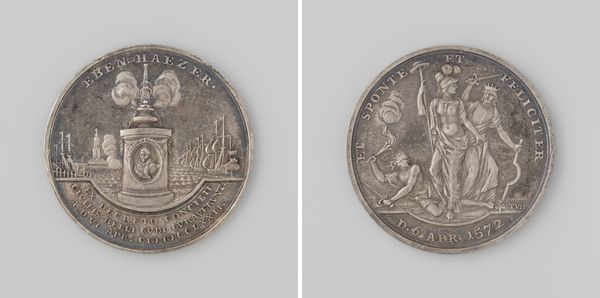
metal, bronze, sculpture
#
portrait
#
medal
#
art-nouveau
#
neoclassicism
#
metal
#
sculpture
#
bronze
#
sculpture
#
history-painting
Dimensions: diameter 6.0 cm, weight 121.97 gr
Copyright: Rijks Museum: Open Domain
Curator: Let's have a closer look at this bronze medal titled "Inhuldiging van Koningin Wilhelmina 1898," made to commemorate the coronation of Queen Wilhelmina. It’s currently held in the collection of the Rijksmuseum. Editor: It’s quite striking, isn’t it? The material itself, the bronze, gives it a sense of gravity and permanence. And I am intrigued by the combination of portraiture and symbolic figuration in the same object. Curator: Absolutely. You see Wilhelmina’s profile on one side, quite regal even as a young woman. It speaks to the rising cult of personality. The reverse depicts the Queen alongside the figure of the Netherlands personified as a classical goddess, clasping hands to symbolize unity and duty. Notice the lion, a national symbol, also present. Editor: It's interesting to see the almost classical way that allegory and monarchy meet here through industrial material. Bronze would have been becoming cheaper due to mass production, enabling such wide scale propagation and commemoration. Also how art-nouveau is emerging too: that font, that decoration is right on the verge. It's like the new grappling with the old. Curator: Precisely! It’s a deliberate combination of historical grandeur and emerging modern national identity. Remember, Wilhelmina’s coronation was a significant moment of national consolidation and public spectacle in a rapidly changing society. The imagery had to evoke a sense of continuity with the past while also signalling a modern, forward-looking monarchy. These medals were important symbolic tools. Editor: Absolutely! And that speaks volumes about how value is assigned to materials and the processes of crafting imagery. Who got paid to design and strike this? What was their social standing, and what's their training? Did their socio-economic class determine how much this commemorative artefact "mattered," was distributed and ultimately perceived at the time? That interplay of manufacture, labor, and meaning is compelling here. Curator: It definitely showcases how art functions as a medium for constructing and disseminating political messages, shaping national identity and reinforcing social hierarchies. Editor: For me, thinking about who owned this – who held this medal in their hands and what meaning that carried for them is very relevant. This little item has huge economic and class resonance. Curator: I agree. This medal is more than just a decorative object, then. It’s a miniature embodiment of the political and cultural forces at play in the Netherlands at the turn of the century. Editor: Yes, a fascinating example of how materials, process and historical moment create resonant art.
Comments
No comments
Be the first to comment and join the conversation on the ultimate creative platform.
